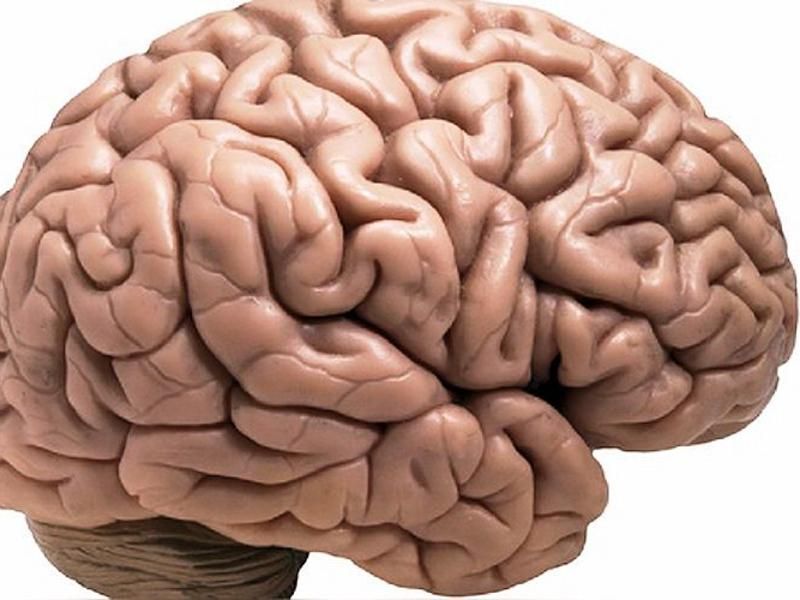Discovery of a protein that protects the brain from Alzheimer's disease
It is the LRP3 protein, which lowers the levels of two proteins involved in the formation of plaques in the brains of people with Alzheimer's disease.
A team of CSIC researchers has shown that a little-known protein called LRP3 controls the levels of beta-amyloid, the protein that accumulates in the brains of people with Alzheimer's disease, forming the plaques that characterize this disease. This protein could be a new therapeutic target and a hitherto unexplored avenue for Alzheimer's research. Details of the research are published in Alzheimer's Research & Therapy. About 40,000 new cases of Alzheimer's disease, the leading cause of dementia and disability in the elderly worldwide, are diagnosed in Spain each year.

Recreation of a human brain.
Pixabay
"When we studied the function of LRP3, about which little was known until now, we discovered that it has a strong influence on the levels of beta-amyloid precursor protein (APP)," says Inmaculada Cuchillo Ibáñez, a researcher in the group Molecular mechanisms altered in Alzheimer's disease and other dementias, led by Javier Sáez Valero, at the UMH-CSIC Neurosciences Institute in Alicante.
"The APP protein is so named because it contains a very tiny protein, β-amyloid, which is the main component of the plaques found in abundance in the brains of people with Alzheimer's disease. The LRP3 protein would be a beneficial factor, and since it is capable of controlling the levels of APP and β-amyloid, it could be a new therapeutic target and a hitherto unexplored avenue for research in Alzheimer's disease," explains Dr. Cuchillo.
Loss of neuroprotection
The research, which was carried out with human frontal cortex samples from the Tissue Bank of the Institute of Neuropathology of the University Hospital of Bellvitge (Barcelona), analyzed the expression of LRP3 in healthy middle-aged people and those with Alzheimer's disease.
"We saw that in the brains of Alzheimer's patients, LRP3 protein levels were decreased at the onset of neurodegeneration. That is, they could lose this protective role of LRP3 with respect to β-amyloid levels at the onset of dementia, and this could be a burden during the development of the disease, because already from the beginning the ability to decrease β-amyloid levels and, therefore, to control the presence of senile plaques in the brain is lost," the researcher points out.
The LRP3 protein is a receptor capable of binding a protein called apoE. The gene that expresses apoE is closely related to late-onset Alzheimer's disease (onset after the age of 65). The apoE protein has three forms: apoE2 (the least common in humans), which reduces the risk of Alzheimer's; apoE3, the most common form, which does not appear to affect the risk of Alzheimer's; and apoE4, which is associated with an elevated risk of Alzheimer's. The researchers have also discovered that apoE3 is a receptor capable of binding a protein called apoE.
The researchers have also discovered that apoER2, another receptor that, like LRP3, is found in the membrane of neurons, favors the increased levels of LRP3 and thus its role as a regulator of amyloid plaque formation in the brain. ApoER2 and LRP3 belong to the same family of low-density lipoprotein (LDL) receptors, which mediate lipoprotein uptake and have been classically studied for their role in cholesterol transport and metabolism. Members of the LDL receptor family are known to be involved in the regulation of synaptic plasticity and in the development of Alzheimer's disease as apolipoprotein E (ApoE) receptors.
With the identification of the presumably neuroprotective function of LRP3, carried out by researchers at the Institute of Neurosciences, a new avenue of hitherto unknown research opens up that may lead to the discovery of new and more effective therapeutic targets to modify or slow down the course of Alzheimer's disease, an important objective that has not yet been achieved.
"Our interest now is precisely the relationship between ApoE and LRP3. We know that ApoE4 is a risk factor for Alzheimer's and it would be interesting to find out its relationship with LRP3 and, indirectly, its effect on APP and β-amyloid levels. Each person has one of the forms of ApoE, either ApoE2, ApoE3 or ApoE4, but we all have LRP3, so finding out the relationship between the different forms of ApoE and LRP3 is very important because actually the effect we observe of LRP3 on APP and β-amyloid protein is quite drastic and the levels of these two key proteins in the development of Alzheimer's disease decrease a lot," Cuchillo points out.
Most of the researchers participating in this study also belong to the Center for Biomedical Research Network on Neurodegenerative Diseases (CIBERNED).
The group Molecular mechanisms altered in Alzheimer's disease and other dementias, from the Institute of Neurosciences UMH-CSIC, in which this research has been developed, starts from a basic but relevant point of view for the development of clinical-diagnostic applications. The translational benefits of their research lie in the fact that they not only seek to elucidate the pathological mechanisms behind these diseases, but also to define possible diagnostic tools and/or processes with therapeutic relevance.
Note: This article has been translated using a computer system without human intervention. LUMITOS offers these automatic translations to present a wider range of current news. Since this article has been translated with automatic translation, it is possible that it contains errors in vocabulary, syntax or grammar. The original article in Spanish can be found here.























































